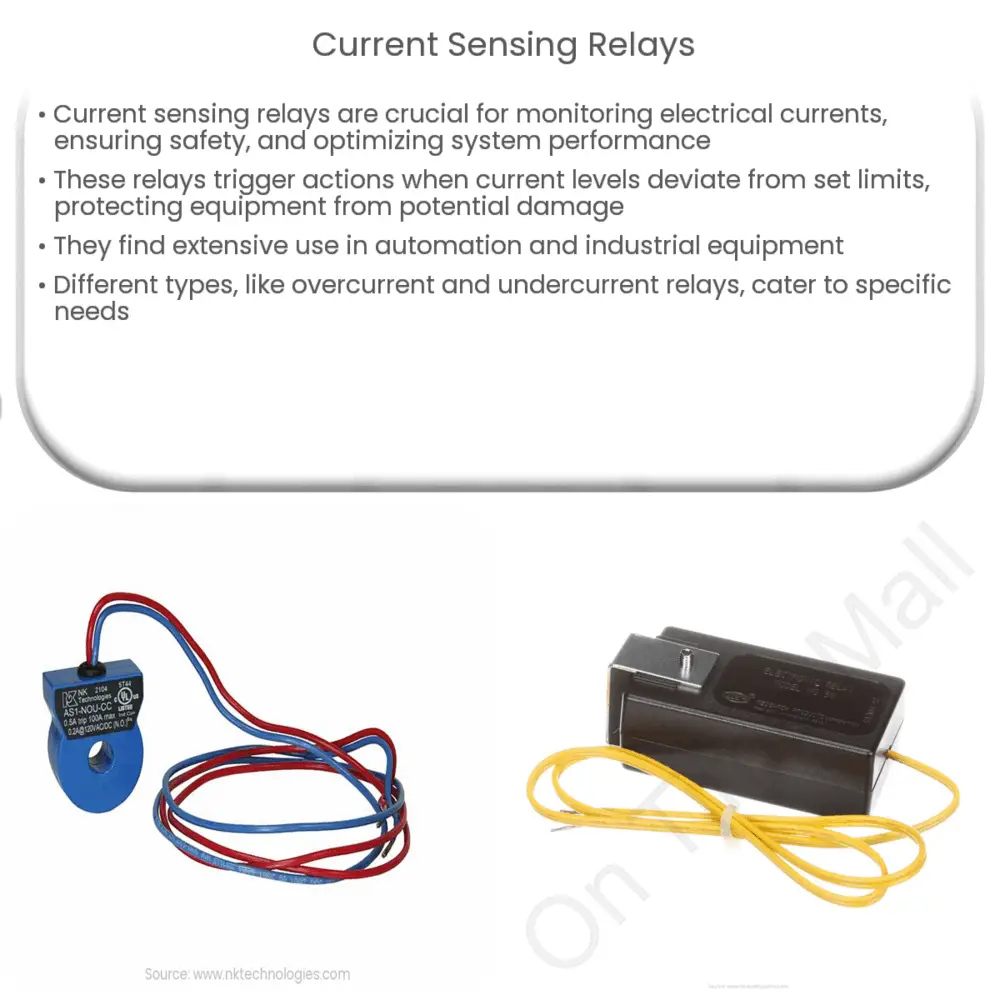Explore the fundamentals of current sensing relays, their types, applications, advantages, and considerations for selecting the right one.

Understanding Current Sensing Relays
Current sensing relays are a vital component of many electrical and electronic systems. As the name suggests, these devices primarily function to monitor electrical current in a circuit and relay that information to another part of the system. This helps to enhance safety, optimize system performance, and facilitate system automation.
How Current Sensing Relays Work
A current sensing relay typically works by monitoring the flow of current in a circuit. It contains a current transformer which can sense a specific range of current. When the current level in the circuit exceeds or falls below the set limit, the relay is triggered, causing an action such as opening or closing a circuit, or sending a signal to a control system.
Applications of Current Sensing Relays
Automation Systems: Current sensing relays are extensively used in automation systems. They help automate processes by monitoring the current and triggering certain actions when the current exceeds or falls below the specified limit.
Industrial Equipment: They’re integral to the operation of various industrial machines and equipment. These relays help to prevent damage caused by overcurrent or undercurrent conditions, thereby protecting costly equipment and ensuring uninterrupted operations.
The Different Types of Current Sensing Relays
There are various types of current sensing relays available, each designed to meet specific needs. The most common types include:
Overcurrent Sensing Relays: These relays trigger when the current exceeds a predefined limit. They are commonly used to protect electrical equipment from damage due to excessive current.
Undercurrent Sensing Relays: These are designed to trigger when the current falls below a certain level. They’re used in applications where maintaining a minimum current is crucial, such as in refrigeration or HVAC systems to ensure the motor is operating correctly.
Differential Current Sensing Relays: These relays measure the difference in current between two points in a circuit. They’re typically used in situations where balanced current flow is critical, such as in a three-phase electrical system.
Advantages and Considerations of Current Sensing Relays
Current sensing relays offer several advantages, the most significant of which is the protection they provide for electrical equipment. By responding to overcurrent and undercurrent conditions, these relays can prevent potentially catastrophic damage, thereby extending equipment lifespan and reducing maintenance costs.
Furthermore, current sensing relays contribute to enhanced system efficiency. By continually monitoring current flow and adjusting operations accordingly, these relays ensure that systems function optimally, reducing energy waste and improving overall performance.
However, when selecting a current sensing relay, certain considerations need to be taken into account. These include the relay’s sensitivity, the range of current it can monitor, the response time, and the type of load it will control. It’s essential to match the specifications of the relay to the requirements of the system it will be used in for optimum performance.
Choosing the Right Current Sensing Relay
Selecting the right current sensing relay can seem challenging given the wide range of options available. The first step is to understand the specific needs of the application. This includes identifying the type of load, the required sensitivity, the desired response time, and any other specific requirements.
Other considerations may include the operating temperature range, the size and form factor of the relay, the necessary lifespan, and the cost. Consulting with a knowledgeable distributor or manufacturer can be invaluable in making the right selection.
Conclusion
In conclusion, current sensing relays play an essential role in various electrical and electronic systems, offering protection, enhancing efficiency, and facilitating automation. By understanding their working principle and their different types, along with the considerations for selecting the right relay, one can effectively harness their capabilities. Although seemingly simple devices, the impact of current sensing relays on system safety and efficiency cannot be overstated. As technology continues to advance, we can anticipate further refinements to these essential components, offering even greater protection and control in our electrical systems.

